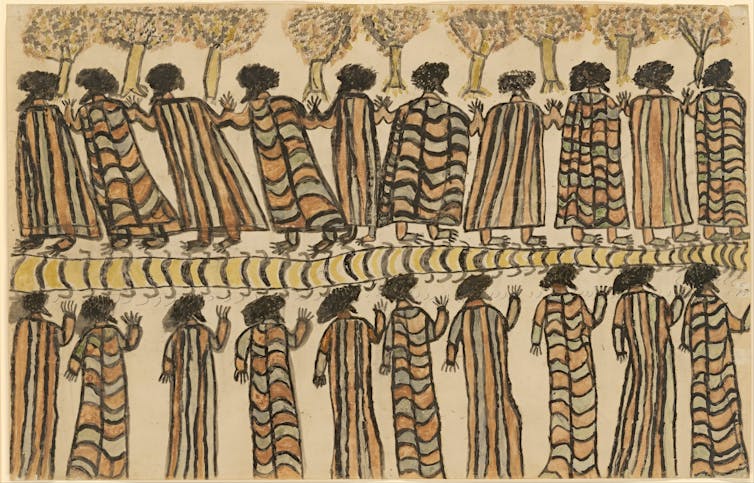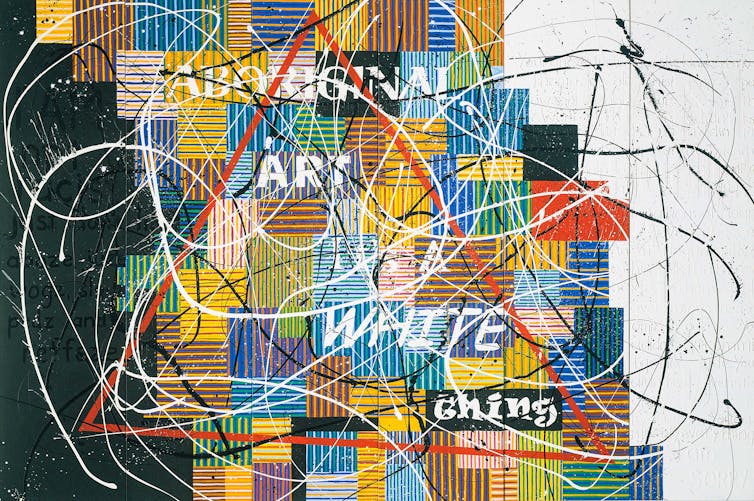Aboriginal Art Blog
ART ARK®
50 years of arts centres
Remote art centres are central to today’s internationally successful Indigenous contemporary art industry. They typically have a white art centre manager and other staff overseen by an Indigenous board....
Sailing vessels in Arnhem Land rock art
The rock art of northwestern Arnhem Land is world-renowned and represents one of the world’s most enduring artistic cultures.
Rock art is a continuing tradition. It includes images of “outsiders”: people and objects brought to Australian shores by Macassans from southeast Asia and, later, by Europeans.
Oldest Aboriginal rock painting.
This 17,500-year-old kangaroo in the Kimberley is Australia’s oldest Aboriginal rock painting
Aboriginal Art, Art Centres, and Covid-19
In troubling and uncertain times like these, we find more meaning than ever in our mission at ART ARK®, which is to create economic opportunities for, and support and celebrate Aboriginal people through art.
Indigenous art centres that sustain remote communities are at risk. VET can help.
Indigenous art provides important economic benefits. When the art market peaked in 2007, Indigenous art was estimated to generate some A$400-500 million a year. This supported 110 Indigenous art centres and about 5,000 art workers (artists).
How Indigenous fashion designers are taking control and challenging the notion of the heroic, lone genius
Indigenous Australians have influenced modern Australian dress since first contact. From possum skin cloaks and booka kangaroo capes to shell necklaces in Tasmania, Europeans have been fascinated with Indigenous materials, skills and aesthetics. They have stolen, purchased, borrowed and worn them for more than 200 years.
Aboriginal art: is it a white thing?
Richard Bell, Scientia E Metaphysica (Bell’s Theorem) 2003, Acrylic on canvas, 240 x 540cm. Milani Gallery.
In 2002 Bell decried how the white-controlled Aboriginal art industry privileged art from remote areas as more “authentic” than that from urban areas. Vernon Ah Kee, another successful artist in Milani’s gallery, agrees: urban Aborigines “are as much Aboriginal as anybody else” and, adds Bell, “we paid the biggest price” for colonisation.
The Tjanpi Desert Weavers show us that traditional craft is art
For over a thousand generations Aboriginal people made no distinction between art and craft. Art was, and still is, a way of life and as much about function as it is about beauty and form. Artistic forms continue to be used to give Aboriginal people skills, knowledge and practical tools to survive, thrive and manage the continent of Australia.
Location, location, location: two contrasting Dreaming narratives
Many Dreaming narratives take the form of lengthy epics, and involve journeying, detailing the inter- and intra-species encounters that take place in the course of those travels.
'Dreamings' and place – Aboriginal monsters and their meanings
A rich inventory of monstrous figures exists throughout Aboriginal Australia. The specific form that their wickedness takes depends to a considerable extent on their location.







